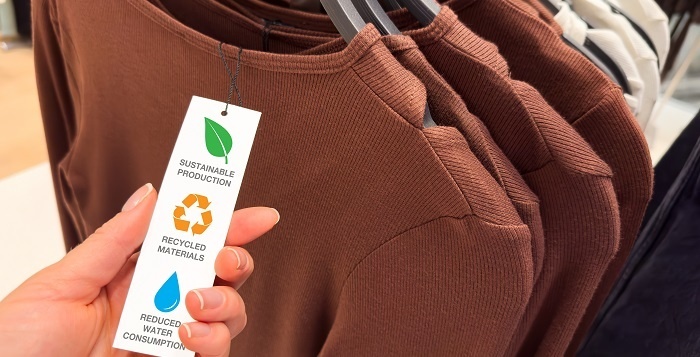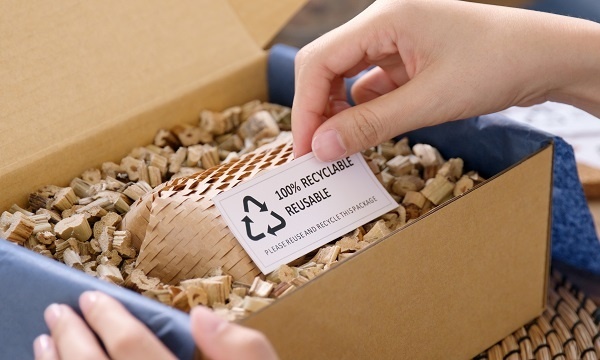The power of innovation, technology and marketing has taken retail ecommerce to new heights in the last five years.
According to Statista, retail ecommerce sales, if compared to 2020 figures, are projected to be more than double and will go past over $1.6 trillion by 2025, in the US alone.
A move online and changing consumer attitudes
Over 40% of consumers receive at least one Amazon parcel a week in the US and a third of the US consumers are willing to pay more for eco-friendly delivery. Conscious of the environmental impact, more than half of consumers in the US and the UK want ecommerce retailers to use less packaging, reported Statista.
Additionally, to reduce environmental impact, 73% of shoppers would definitely or probably change their consumption habits, according to a Nielson report.
While sustainable consumerism is gaining popularity, awareness on sustainable ecommerce — achieved through using greener fuels and materials — among enterprises is still very low.
With the increasing number of stores going online and changing consumer attitudes, it’s easy to assume that the process of reducing environmental cost of commerce has accelerated. However, this is not the case.
By 2030, carbon emissions in the biggest urban areas worldwide are predicted to reach around 25 million metric tons because of ecommerce logistics alone.
Making the sustainable switch
According to a McKinsey report, 79% of Fortune 500 companies had higher returns on carbon investments after they reported emissions to CDP. It shared examples of Bayer and Lockheed Martin, mentioning their practices in sustainability and carbon-neutrality without a fall in profitability.
Considering the switch to more sustainable practices, ecommerce companies and online retailers should first ask three basic questions:
- Can inclusion of sustainability and sustainable practices in an ongoing business still make it profitable?
- Why are recycling materials crucial for environmental sustainability and what are the benefits of a circular economy?
- What is a sustainable supply chain? How to create, monitor and maintain it and what are its benefits?
“Consumers increasingly seek to be more socially and environmentally responsible in their purchases now. Therefore, leading organizations are actively exploring ways to adopt sustainable models for their key business processes,” says Steffen Lassmann, Solution Director and Head of Sustainability Solutions, IoT WoRKS, at HCLTech.
He continues: “If a circular economy practice is considered, corporate imperatives to source and sell more sustainably are being driven by rising real-world problems concerns about climate change and global resource consumption.
“Besides lowering greenhouse gas emissions, the practice of recycling and reusing can lead to benefits ranging from energy cost savings, pollution reduction and removal of landfill waste.”
These actions are articulated in an enterprise’s sustainability report, the statements of its global thought leadership, CSR activities and ESG achievements. These not only attract investors and partnerships and build a better brand value among consumers, but also encourage existing stakeholders in the value chain to adopt sustainable practices.
Practices such as using biodegradable materials in the manufacturing processes and packaging, green transporting and delivery, transparent reporting of emissions, embracing right technologies, switching to renewable energy, empowering customers and removing recycling barriers will create a sustainable supply chain.
People value these processes and actively choose “sustainable” products, according to a 2019 NYU Stern School of Business research, which stated 50% growth took place in consumer-packaged goods and products marked as “sustainable” from 2013 to 2018 in the US.
Sustainable retail
As product return rates for ecommerce go up, it is important that retailers place all product information clearly on websites to avoid confusion for consumers.
The adoption of technologies like AR helps with sizing information, reducing the number of returns. Retailers should use digital invoices instead of a physical receipt. It’s also important to host an ecommerce site on a green platform.
Practices like these can reduce the carbon footprint substantially.
Retailers can also encourage consumers to return cardboard cartons used in packaging instantly to deliverymen or later. While nine cubic yards of landfill space is saved with a ton of recycled cardboards, it takes only 75% energy to create new ones from the returned boxes.
For example, Milk & More does the same with its bottles in the UK.
With incentives such as converting returns of packaging materials into points for next purchase, a smart retailer can also attract customers who care for the environment.
Giving products a second life is what a circular economy is all about. But often fraudsters get into the picture and cheat customers with online payment scams. If retailers establish a trusted second-hand marketplace, it will attract more customers. For example, Maruti Suzuki’s exchange policy for its old cars against new ones.
Sustainable ecommerce
To make ecommerce sustainable, HCLTech has developed a range of solutions and proof-of-concepts on SAP Commerce Cloud. This allows businesses to adopt and embrace sustainability with minimal disruptions while balancing the three competing pillars of sustainability: economic growth, social responsibility and environmental protection.
“For an organization yet to embark on this journey, many of them think sustainability often means choosing a path less convenient with delay in ROI,” adds Lassmann.
He continues: “Easing the process along with better understanding for customers, HCLTech sustainable ecommerce solutions help them adopt the processes, tools and methodologies that help drive sustainability at scale. HCLTech uses the latest digital technologies to ensure transition toward sustainable ecommerce is smooth and easy on the budget.”
Focusing on brand philosophy and connection with customers, the HCLTech offerings help ensure that sustainability is clearly associated with business and brand. Its pre-packaged solutions help businesses adopt sustainable packaging in ecommerce, reducing tons of waste.
Not only HCLTech solutions on SAP Commerce make deliveries and returns more sustainable in terms of reducing carbon footprints, but these solutions also integrate SAP Commerce Cloud and Carbon Footprint Management services to enable organizations to easily display the footprints of products sold online. It even helps them buy carbon credits seamlessly against the products and services customers buy.





